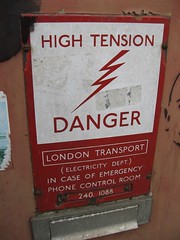or, How to Save Your Darlings!
We’ve all heard the phrase “Kill your darlings,” right? While sometimes, it feels like the injunction means that we have to carve out anything we liked in our work—whoa, don’t do that! “Kill your darlings” means more to carve out the pieces of your story that are important only to you—if they don’t matter to your characters, your story and your readers, they shouldn’t be in there, no matter how delightful their dinner  discussion might be.
discussion might be.
Janice Hardy has a great article on “Poking Dead Scenes With A Stick,” AKA do you really need that scene. She says:
When you have a dead scene, ask yourself: If I cut this scene, would anyone but me care or even notice?
If the answer is no, cut the scene. Go ahead and move it to a new file called "cut scenes" and save in case you need it later if you’d like. Be ruthless, the story will be better for it.
She has some great criteria for determining whether or not your scene is truly necessary. There might be events, statements or actions in the scene that are important, but you might be able to move them to another scene if you really need them.
But sometimes, we really do need these scenes. Perhaps they contain clues/foreshadowing that won’t work any other place. (But here’s a hint: if that clue is the only reason we need the scene, it’s probably going to stand out to the reader—maybe a little too much—unless we can make the rest of the scene work harder.)
So if we really need to keep a scene, what do we do to make that scene matter? To understand that, let’s take a look at the purposes of scenes.
Mission of scenes
On the Writing on the Wall blog, author Annette Lyon lists six of the most basic purposes of a scene:
- Advance the plot
- Create or show conflict
- Set the setting
- Reveal character
- Show backstory
- Lay groundwork for later plot
Numbers 1 and 2 are probably the most important in any sort of commercial or popular fiction. In fact, Annette says that most of your scenes should have #1 or #2 as a purpose—in addition to one of the other six.
To repeat, nearly every scene should advance the plot and/or create/show conflict, in addition to developing another aspect of the story. A scene just for character development isn’t enough of a purpose.
Look carefully at the scene in question and determine if it’s mostly or entirely serving only one of these purposes—and if it’s serving #1 and/or #2 at all.
So, let’s say you’ve gone through the scene line by line and you’ve determined that there is absolutely no other way to convey this information—but the scene still isn’t doing enough. You need to make that scene matter.
Making scenes matter
When you truly cannot cut the scene, what do you do? You make the scene matter.
First of all, look at the list of scene purposes above (and add to it if you really need to). How can you add those purposes to your scene?
When I’m trying to make a scene matter, I ask myself these questions:

- What is the character’s goal for this scene?
- How can things get worse?
- How can I raise the stakes?
- What is the source of conflict in this scene and how can I make the conflict bigger?
- How can I weave in the antagonist, the plot, a subplot or a character turning point?
- Who is the worst person who could walk in right now?
- What would happen if this scene took place somewhere else?
- What is the character feeling and have I shown it enough on the page?
In a second post on this topic, Janice Hardy also offers a list of things to look at to help make your scenes matter (and there’s some overlap, but I wrote out my mental list after reading her first post):
- What is your protag doing?
- Where does this scene take place (setting)?
- Who else is in the scene?
- Where structurally does this scene take place (act one, midpoint, act two, etc)?
- What happens right before this scene?
- What happens right after this scene?
- What’s your theme?
- What are the stakes?
With all these questions, mine and hers, we want to look for ways to make the scene more integral to the story. Incorporate the themes or the subplots more, heighten the conflict and the suspense, etc.
When I was rewriting the book that will be my first published novel, I knew I needed to amp up the mystery plot (and tone down the romance plot a bit). So I went through each scene, specifically looking for a way I could increase the tension and suspense, raise the stakes and bring in the antagonists more.
And you know what? Even though I’ve written four books since that one, I still have to do this. Last month I did the first revision on my most recent manuscript, and I had to look for ways to make the scenes more interesting, state the characters’ goals and tie in the suspense more.
For a more specific example, in the last week, I reread a book I wrote almost 3 years ago as the first step in revisions. I’ve already edited it a bit, so just about all of the scenes are in there for a good reason (though I can see I hadn’t really grasped scene goals at the time). However, some sections of the book really drag, so I’m still brainstorming how I can draw in the antagonist more, how I can keep the threat present and how I can raise the stakes.
One really good example I’d like to share, though, is at a major turning point of the book. It’s the midpoint. Things are looking pretty bad for the future of the romance, and the hero goes home and basically mopes. (It’s my own writing; I can be harsh if I want to.)
This is the midpoint of the book, a major turning point. After the midpoint, says Larry Brooks, the character is ready to go on the offensive.  The third quarter is all about the attack. But my character basically rolled over and played dead after the midpoint.
The third quarter is all about the attack. But my character basically rolled over and played dead after the midpoint.
When I reread my midpoint scene, I thought, “NO! He does not MOPE! HE WILL FIGHT!” (If you feel like either quoting The Incredibles or singing some Peter Cetera, feel free.) And suddenly the entire third quarter made sense. I still have a lot of work to do to implement these changes, but suddenly this scene matters so much more.
In my example, yet another scene of the hero mourning his losses didn’t add anything to the story, except that we found out he’d gone so far as to buy an engagement ring before they broke up. (This does not help to make him less mopey, LOL.) In my new vision for the scene, we’ll still get that information—which wasn’t vital to the story in the original version. But now, that ring (which will actually be offstage), plus the events of the day, will help my character to a turning point.
And I can’t wait to see him fight.
What do you think? How do you help to make scenes that aren’t doing a lot for your story really integral?
Photo credits: delete—Mixy Lorenzo;
question mark—Alexander Drachmann; sad sack baby—J

 And it wasn’t until I really dug in to understand that revision can (and often should) mean re-envisioning your story that I really began to be a better writer—a publishable writer. Author Natalie Whipple knows where I’m coming from, as she lists “I wish I took editing seriously” as
And it wasn’t until I really dug in to understand that revision can (and often should) mean re-envisioning your story that I really began to be a better writer—a publishable writer. Author Natalie Whipple knows where I’m coming from, as she lists “I wish I took editing seriously” as  This issue runs much deeper than just word choice and voice: to make your work as good as possible, you may have to re-envision the novel itself. Is this characterization right? Could this theme be stronger? Is there a better sequence for these events—and are they even the right events?
This issue runs much deeper than just word choice and voice: to make your work as good as possible, you may have to re-envision the novel itself. Is this characterization right? Could this theme be stronger? Is there a better sequence for these events—and are they even the right events?



 .
.





